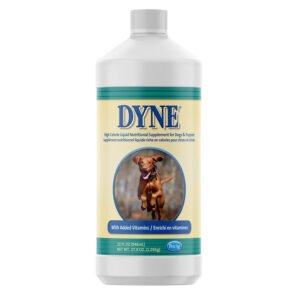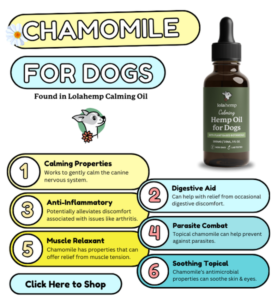Dogs do not shed more when in heat. Shedding is primarily influenced by breed, season, and health. So lets read: Do Dogs Shed More When in Heat?
Dogs shed fur for various reasons, mostly due to changes in seasons, breed characteristics, and overall health. When a dog is in heat, hormonal changes occur, but these do not directly increase shedding. It’s essential to differentiate between normal shedding cycles and other factors like diet, stress, or medical conditions that can affect fur loss.
Regular grooming and a balanced diet can help manage shedding effectively. Understanding these aspects can ensure your pet remains healthy and comfortable. Monitoring your dog’s coat and consulting a veterinarian can provide insights into any abnormal shedding patterns. Proper care and attention can make a significant difference in maintaining your dog’s coat health.
Table of Contents
Canine Heat Cycle
The canine heat cycle is a natural process in female dogs. During this cycle, many changes occur in their bodies. Owners often notice increased shedding during this time. Understanding the heat cycle helps in managing your dog’s health better.
Phases Of Heat
The heat cycle has four distinct phases. These phases are:
- Proestrus
- Estrus
- Diestrus
- Anestrus
| Phase | Duration | Characteristics |
|---|---|---|
| Proestrus | 9 days | Swelling of the vulva, bloody discharge |
| Estrus | 9 days | Ovulation, receptive to mating |
| Diestrus | 60-90 days | Pregnancy or return to normal state |
| Anestrus | 90-150 days | Resting phase |
Hormonal Changes
During the heat cycle, hormones fluctuate significantly. These changes affect the dog’s behavior and physical condition.
- Increased estrogen levels
- Changes in progesterone
- Fluctuations in luteinizing hormone
These hormonal changes can lead to increased shedding. The dog’s coat may look thinner and duller. This is a normal part of the cycle.
Understanding the heat cycle and its phases can help you care for your dog. Monitoring hormonal changes ensures your dog stays healthy and comfortable.
Shedding Basics
Dogs shed to get rid of old or damaged hair. Shedding is a natural process. It helps maintain a healthy coat and skin. Some breeds shed more than others.
Why Dogs Shed
Dogs shed for several reasons. Here are the most common:
- To remove dead hair.
- To grow new hair.
- To regulate body temperature.
- To get rid of damaged or old hair.
Shedding can also be a sign of health issues. Stress, allergies, and poor nutrition can cause excessive shedding. Always consult a vet if shedding seems unusual.
Seasonal Shedding
Dogs shed more in certain seasons. This is known as seasonal shedding. It usually happens in spring and fall. Dogs shed their winter coat in spring. They shed their summer coat in fall. This helps them prepare for temperature changes.
| Season | Shedding Pattern |
|---|---|
| Spring | Shedding winter coat, growing lighter summer coat. |
| Fall | Shedding summer coat, growing thicker winter coat. |
Some dogs shed year-round. These are usually breeds with shorter hair. Long-haired breeds may shed less frequently but in larger amounts.
Impact Of Heat On Shedding
Understanding the impact of heat on shedding can help dog owners manage their pet’s fur. Dogs may shed more during their heat cycle, affecting their overall coat health.
Hormone Influence
Hormones play a significant role in a dog’s shedding process. During heat, a dog’s hormone levels change, which can trigger more shedding. The increased shedding can be due to fluctuations in estrogen levels. This hormonal imbalance can weaken hair follicles, leading to more hair loss.

Credit: https://www.ovrs.com
Stress Factors
Dogs in heat may experience increased stress, leading to more shedding. Stress can affect a dog’s overall health, including their coat. Common stress factors include:
- Changes in routine
- Increased attention from other dogs
- Physical discomfort
These stressors can cause dogs to shed more as a response to their environment.
Breed-specific Differences
Dogs exhibit varying shedding patterns. This depends on their breed. Some dogs shed more, while others shed less. Understanding these differences helps manage shedding better.
High-shedding Breeds
Certain breeds shed more, especially during heat cycles. These include:
- German Shepherds
- Golden Retrievers
- Siberian Huskies
These breeds have thick double coats. They shed heavily twice a year. During heat, shedding might increase. This is due to hormonal changes.
Regular grooming helps manage shedding. Use quality brushes to remove loose fur. Bathing with shed control shampoos also helps. Keeping your home clean is easier with these tips.
Low-shedding Breeds
Some dogs shed very little. These breeds are suitable for people with allergies:
- Poodles
- Bichon Frises
- Shih Tzus
These breeds have hair, not fur. They shed minimally, even during heat cycles. Their coats require regular grooming. Trimming and brushing help maintain their coat health.
These breeds are often called hypoallergenic. They produce fewer allergens, making them ideal for sensitive individuals.
Other Shedding Triggers
Dogs shedding can be influenced by several factors other than being in heat. It is important to understand these triggers to manage your dog’s shedding effectively. Below are some key factors that can contribute to increased shedding.
Diet And Nutrition
A dog’s diet and nutrition play a crucial role in their coat health. Poor nutrition can lead to excessive shedding. Ensure your dog gets a balanced diet rich in essential nutrients.
- Protein: Protein is vital for a healthy coat. Choose high-quality protein sources.
- Omega-3 Fatty Acids: These help in reducing inflammation and promoting a shiny coat.
- Vitamins and Minerals: Vitamins like A and E, and minerals such as zinc, are essential.
Feeding your dog a well-balanced diet will help minimize shedding.
Health Conditions
Various health conditions can also lead to increased shedding. Identifying these conditions is essential for effective management.
| Health Condition | Description |
|---|---|
| Allergies | Allergies can cause itching and shedding. Common allergens include pollen and food. |
| Parasites | Parasites like fleas and mites can irritate the skin and cause shedding. |
| Hormonal Imbalances | Conditions like hypothyroidism can affect the coat and cause shedding. |
If your dog shows signs of any health issues, consult a veterinarian for proper diagnosis and treatment.
Managing Shedding
Managing your dog’s shedding can be challenging, especially during heat cycles. Shedding increases due to hormonal changes. Proper management reduces hair around your home and keeps your pet comfortable.
Grooming Tips
Regular grooming helps control shedding. Brush your dog frequently to remove loose hairs.
- Use the right brush: Different breeds need different brushes. Choose one that suits your dog’s coat.
- Brush daily: Daily brushing reduces hair accumulation on furniture and floors.
- Bathe often: Regular baths help to loosen and remove excess hair.
- Conditioner: Use a quality conditioner to keep the coat healthy and reduce shedding.
Environmental Control
Maintaining a clean environment minimizes the impact of shedding. Here are some tips:
- Vacuum regularly: Use a vacuum designed for pet hair. Clean carpets and furniture often.
- Air purifiers: Air purifiers help trap pet dander and hair.
- Wash bedding: Frequently wash your dog’s bedding. Clean it to remove hair and dander.
- Control humidity: Use a humidifier to keep air moist. This helps reduce shedding.
Feeding a balanced diet also reduces shedding. Ensure your dog gets all necessary nutrients. Omega-3 supplements are beneficial for a healthy coat.
By following these tips, you can manage your dog’s shedding during heat cycles efficiently. Regular grooming and environmental control are key.
When To See A Vet
Many dog owners wonder if their pets shed more when in heat. Understanding when to see a vet is crucial. Excessive shedding can be a sign of health issues. Early detection helps ensure your dog’s well-being.
Excessive Shedding Signs
Excessive shedding can indicate a problem. Look for these signs:
- Clumps of hair falling out
- Bald patches appearing
- Red or irritated skin
- Constant scratching
If you notice these signs, it’s time to consult your vet. They can diagnose the cause and suggest treatment.
Underlying Health Issues
Shedding can signal underlying health issues. Common problems include:
| Health Issue | Description |
|---|---|
| Allergies | Reactions to food, pollen, or other substances |
| Hormonal Imbalance | Changes in hormone levels |
| Parasites | Fleas, mites, and other pests |
| Skin Infections | Bacterial or fungal infections |
These issues can affect your dog’s coat and skin. Regular vet visits help catch problems early. Healthy skin leads to less shedding.
Myths And Facts
Many dog owners wonder if their pets shed more during heat. There are many myths and facts about this topic. Let’s explore some common misconceptions and the scientific evidence behind them.
Common Misconceptions
Many people believe female dogs shed more in heat. This is a widespread myth. Shedding patterns in dogs are influenced by various factors. These factors include breed, health, and environment.
Another myth is that shedding during heat is a sign of poor health. This is not true. Shedding can occur for many reasons. It doesn’t always indicate a health issue.
Scientific Evidence
Scientific studies show no direct link between heat cycles and increased shedding. Hormones do change during heat. However, these changes do not cause significant shedding.
Seasonal shedding occurs naturally in many dogs. This shedding is often mistaken for heat-related shedding. Dogs typically shed more in spring and fall. This helps them adjust to temperature changes.
Stress can also cause shedding. Dogs in heat may experience stress. This can lead to temporary shedding. This shedding is usually minimal and short-lived.
To summarize:
- Shedding is influenced by breed, health, and environment.
- Hormonal changes in heat do not cause significant shedding.
- Seasonal shedding is often confused with heat-related shedding.
- Stress in heat can lead to temporary shedding.
Frequently Asked Questions
Do Dogs Shed More When In Heat?
Yes, some dogs may shed more when in heat. Hormonal changes can affect their coat.
What Causes Increased Shedding In Dogs?
Hormonal changes during a dog’s heat cycle can cause increased shedding. Stress can also contribute.
How To Manage Shedding In Dogs?
Regular grooming and a balanced diet can help manage shedding. Consult your vet for specific advice.
Are All Dog Breeds Affected By Heat Shedding?
Not all breeds are affected equally by heat shedding. Some may shed more than others.
Conclusion
Understanding your dog’s shedding patterns is essential. Heat cycles can affect shedding, but it’s not the only factor. Regular grooming and proper care can help manage shedding. Always consult your vet for personalized advice. Stay informed to ensure your furry friend stays healthy and happy throughout all seasons.



